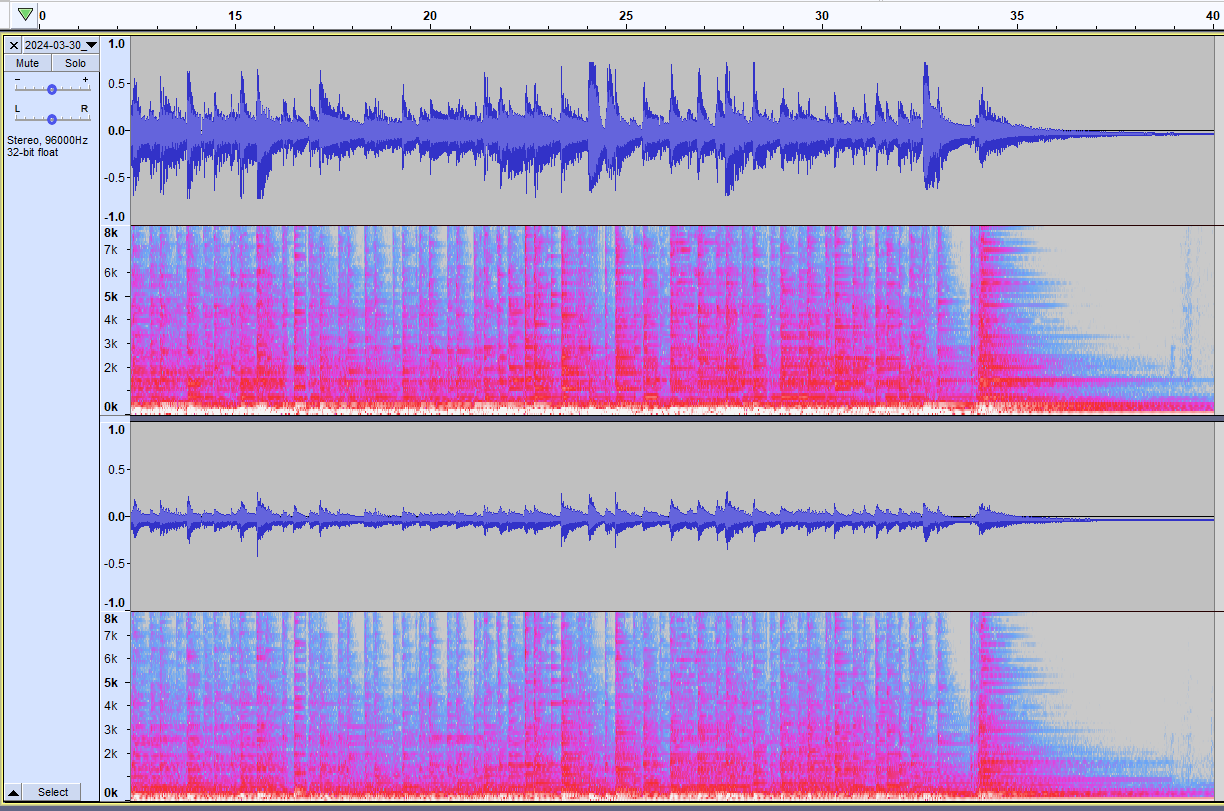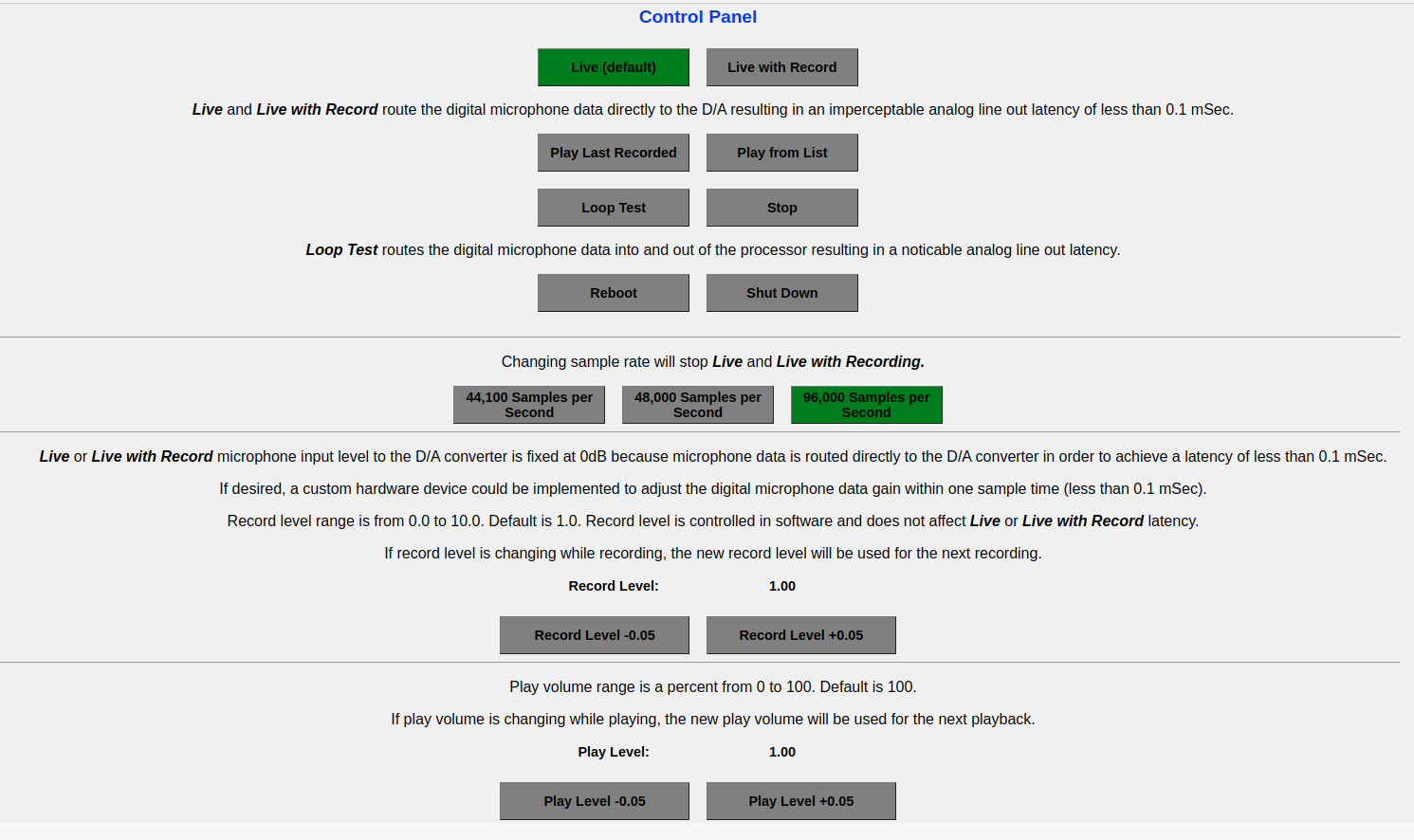
Note 1. Microphone acoustic input to analog line output latency is less than 0.1 mSec (about one sample period), which is an acoustic distance of less than 2 inches.
Note 2. Stereo digital recording files at 44,100 samples per second with 18 bit sample resolution (stored as 32 bit float WAV) requires 352,800 bytes per second. The base product includes 8 GB of recording memory, which equals about 6.4 hours of recording time.
Stereo digital recording files at 96,000 samples per second with 18 bit sample resolution (stored as 32 bit float WAV) requires 384,000 bytes per second. The base product includes 8 GB of recording memory, which equals about 6 hours of recording time.
Stereo digital recording files at 96,000 samples per second with 18 bit sample resolution (stored as 32 bit float WAV) requires 768,000 bytes per second. The base product includes 8 GB of recording memory, which equals about 3 hours of recording time.
| Parameter | Value | Conditions |
| Frequency Range | 50 Hz to 20 kHz, +/- 3 dB (frequencies lower than 50 Hz are picked up at lower levels) | 44,100, 48,000, or 96,000 samples/sec |
| Dynamic Range | 104 dB | 18 bits per sample |
| Signal to Noise Ratio | 65 dB A-weighted | 94 dB SPL @ 1 kHz |
| Total Harmonic Distortion | 0.2% typical, 1% max | up to 94 dB SPL |
| Total Harmonic Distortion | 1% max | 94 dB to 110 dB SPL |
| Total Harmonic Distortion | 10% | 120 dB SPL (Acoustic Overload Point) |
Guitar: Martin D28 (1970) with Martin MA550T Phosphor Bronze Strings

Left channel microphone level (upper display) is higher because it was inside the guitar sound box and captured the sound box reasonance.
Right channel microphone (lower display) was on guitar body top near bridge on pick guard and captured more high frequency.
Recording from stereo microphone digital audio: 96,000 samples/second, 32-bit float WAV.
Strumming and picking by fingernails and skin fingertips. A guitar pick will typically create more high frequency transients.
In a DAW (e.g. Cubase) it is recommended to create two tracks, one for inside the sound box and one for near the bridge. You can then set EQ, FX, and left/right balance as desired.
Note: The sample audio file may be downloaded.

The product always powers up in the default Live Performance mode. The WiFi Status Page shown above may optionally be used to enable recording, play back recordings, perform a loop test, and manually shut down the product. It is not neccesary to use the WiFi Status Page for Live Performance mode.
Recordings can be downloaded from the WiFi Status Page.
For more information please email MicAudioDigital@AudioClassify.com.